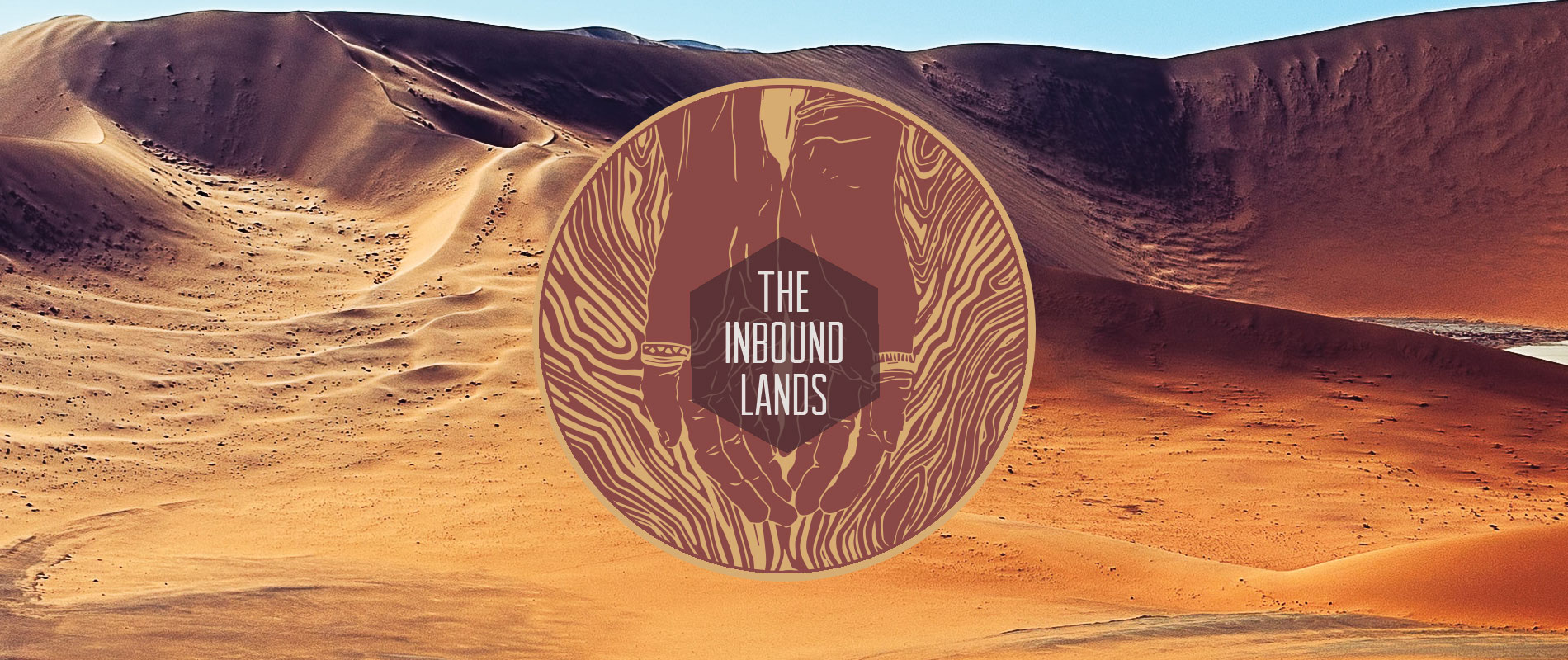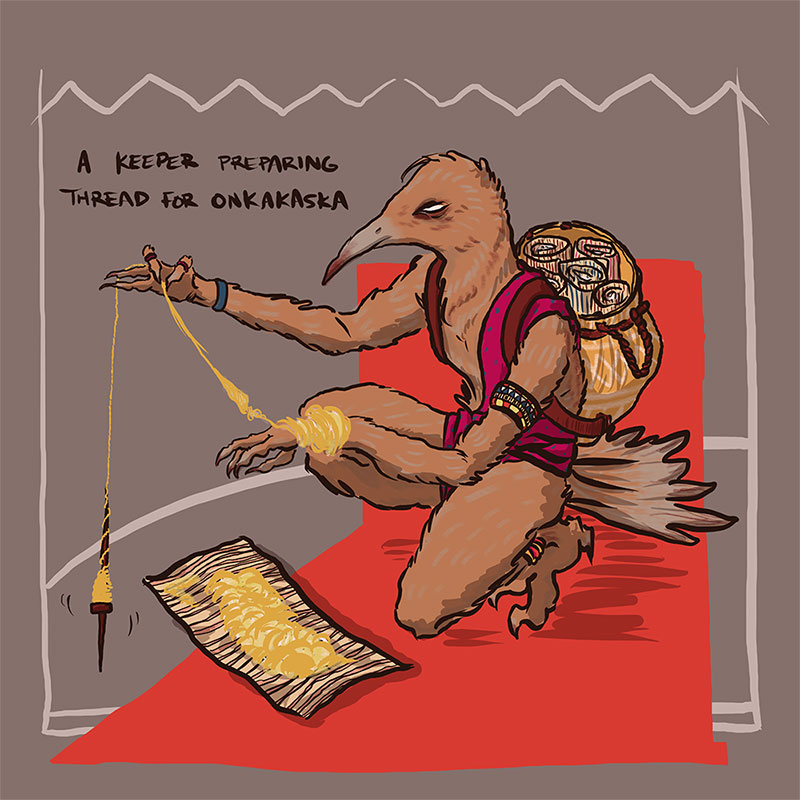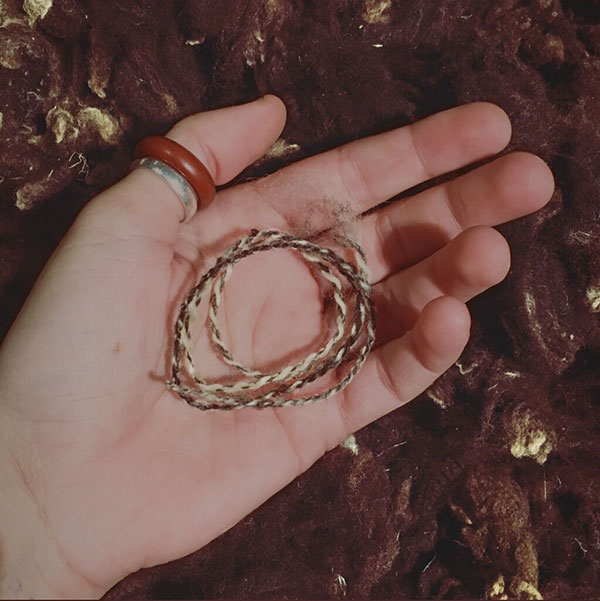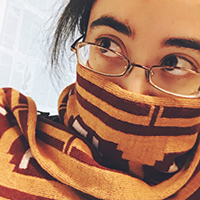Onkakaska
(ohng-KAH-kah-skah) : The contract that binds two together
If you look closely enough, you see: the world is held together by knots.Onkakaska is the elaborate currency system of knotwork cords used to track inventory and record credit contracts among Caravans. The origin of Onkakaska as currency is nebulous. Some claim that the tradition began in the Naval Caravels, where knotwork is a commonplace skill, and was carried into The Dust as the empire expanded inwards on the continent. Others claim it almost certainly moved out of the Ni'Anman, who have their own strong decorative knotwork, and was Trued when the practice was assimilated by the Caravans who traded with and recruited their Southern neighbors. Others claim it was always a part of the desert, as a variation of the artisan cloth traditions already present in Ni'kashiga culture, and which rose to prominence as a fiscal artform during the expansion. Regardless of the origins, the practice of Onkakaska is an artform that remains common practice among the migratory Caravans. Far sturdier than bushfruit papers, far lighter than metal coinage, and far more practical than actual inventory, Onkakaska is the dominant form of inventory and credit records for these far-ranging communities.
Onkakaska, that? The wise merchant knows that success is a twisted line, that you wind again and again to the same places, that the lines you cast to these people are the ones that will hold you fast when the dust would have you fly away. This is why we honor the knot in this way: because it holds us fast to the places and people that matter.
Manufacturing process
Initial Manufacturing
The raw elements of Onkakaska are simple: twisted fibers, typically spun and waxed. Keepers of Onkakaska usually travel with premade threads as anticipated for the journey, and several wads of roving with which to make new threads as needed.Maintenance as an active record
Onkakaska are notoriously challenging to newcomers, and their care, adjustment, and reading are entrusted to elder members of the Caravans. These highly-trained specialists record not only the financial details of the caravan's journey - inventory accounting, credits and debits, and payments - but use the knots as method of detailing any potentially-crucial information that could be relevant to the trip, such as miles traveled, aspects of weather, and numerical accounts of interactions. The reading of an Okakaska lies not only in the visual details, but in the tactile reading and in the finer details of construction.Elements of Onkakaska
Onkakaska Proper: The Primary Rope
Onkakaska contain a primary rope, which tends to be thicker (in order to bear the weight of the secondary rope) and shorter in length, typically designed to eventually encircle and connect around the shoulders of the Knotkeeper, who may wear the Onkakaska during important trading negotiations. Onkakaska record the entirety of a trade cycle: A caravan typically has its own primary Onkakaska - with a new one made for each new migratory route cycle - while a settlement or trade ground will have their own, documenting the past a'hu of contractual agreements and financial records.Thon'pa: The Secondary Rope
Secondary ropes, better known as Thon'pa or Thon'kakaska, branch out from the primary rope, each noting a particular interaction or financial record based on the color of the string used, the structure of the knots, and the direction in which they are tied. Two copies are made: one for the caravan, and one for the trade ground. The type of fibers used to spin the Thon'pa typically encode potentially significant aspects of the general interaction (weather, conditions, miles traveled, etc), and the color of thread used generally identifies any significant parameters to the agreement: as a record, as a debt to be repaid, as a contractual agreement for futures and credits, and any other modifiers to the normal record of exchange. Particularly complex records may be thicker than standard Thon'pa, or branch off into supplemental tertiary threads as required or as the original contract is modified over time.Aska: The Fiscal Knot
Though the types of knots are a tactile language all their own, each with their own unique name, the general term for Onkakaska knots is Aska, sometimes referred to as Aska'kakaska. As a form of binary, the placement and type of knot (or the addition of a supplemental knotwork) encodes both the quantity of product transacted and identifies the product itself.Ince': The Signature Record
The end of a financial record is defined by the inclusions of Ince', or Ince'kakaska. As "marker" tabs, or carved beads made from wood, stone, metals, or even sturdy ceramics, they are affixed to the bottom of the secondary rope, with the loose ends sealed. In addition to adding minor weight to help straighten the secondary rope for the ease of reading, these markers note the end of the negotiation, and help create a visual timeline of trade grounds, which each have their own distinctive Markers. The Ince' is provided by the trade grounds and caravan, with each receiving the Thon'pa "closed" with the other's Ince', and the marker identifies the other party with which the contract is held as well as the location where the agreement was transacted.Significance
As social currency
As desert currency, Onkakaska relies not only on physical inventory and trade agreements, but on the social currency of elaborate interdependence and trust relationships that wilderness survival thrives on. It predominantly records trade between caravans, who import goods and products, and the trade grounds of settlements, who provide water and replenishment of supplies, as well as export local goods and empowerments. Because the products exchanged are largely of necessity - water and provisions - when onkakaska is employed as a system of credit and debit, should the contract of an onkakaska be broken, the consequences are dire: if one or both parties do not perish due to a lack of necessities in these harsh environments, they would soon suffer long-term consequences as either trade ground or caravan would refuse future trade invitations, effectively exiling the offenders from their supply lines. Though they travel with the Caravans, makers of Onkakaska ultimately belong to and report to Flock Khokhatho. In this way, there is less chance of a particular Maker being swayed unfairly into deceitfulness in favor of the Caravan, and helps to preserve the trust between the trade negotiations.Use in Contemporary Times
As the empire has expanded, the concept of the Caravan route has shifted: no longer bound to primarily Ochi O'hka, trade routes cross the majority of the Inbound Lands. As the Greater Inbound Lands have become unified under the Ni'kashiga, movement away from barter systems into standardization of Bthoga and Manzeska have replaced much of the need for Onkakaska. This being said, it is still the favored financial record of choice among caravans when noting major inventory transactions and credit/debit, for its sturdiness and effectiveness as a tactile language currency.Outbound Significance
Artifacts referencing Okakaska include:- The Archeological Association (Modular Art Pod), 2019
- We thought the Incas couldn't write. These knots change everything., by David Cossins, for the New Scientist
- Khipu Database Project, by Dr. Gary Urton and Carrie Brezine
- In Praise of the Humble Knot, by Jody Rosen, for the New York Times
- personal study and material made during The Science of Fiber course, taught by LoMaNa (2019, Nashville, TN, USA)









Your article is very polished and so in-depth!
Thank you! I research very thoroughly before adding aspects to the world, in order to honor the things I bring in! I hope that they will inspire others to look more deeply into some of these things, as well ^_^